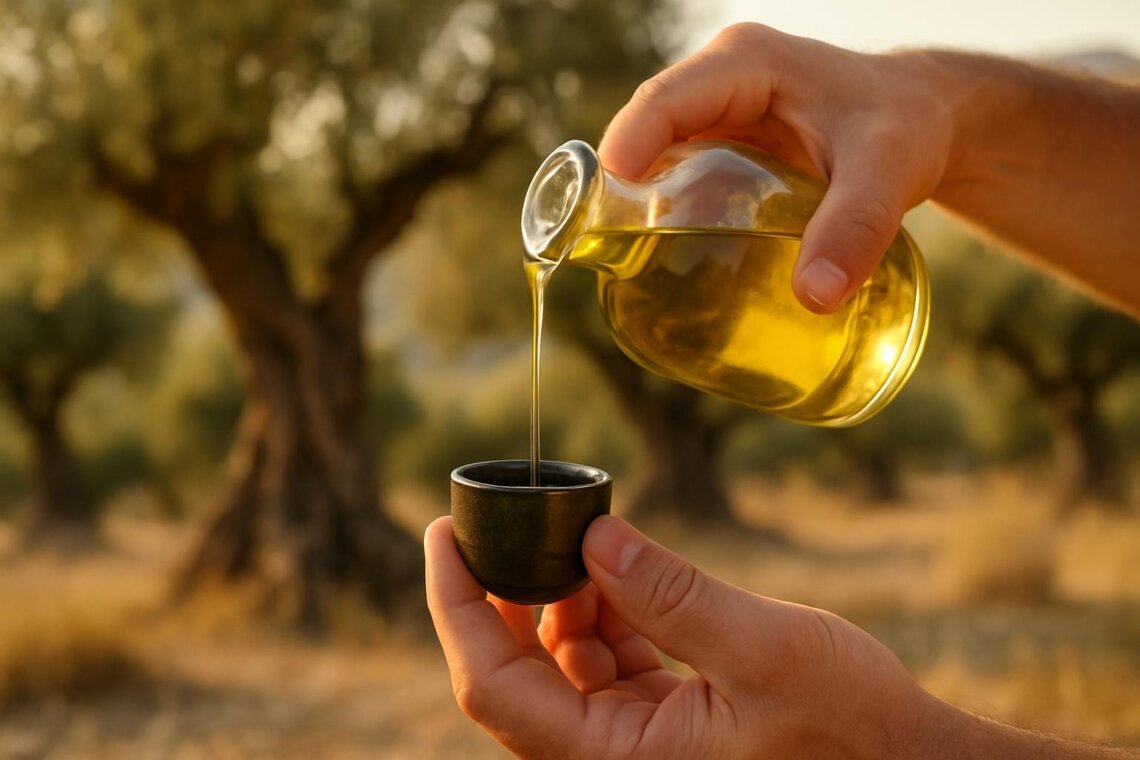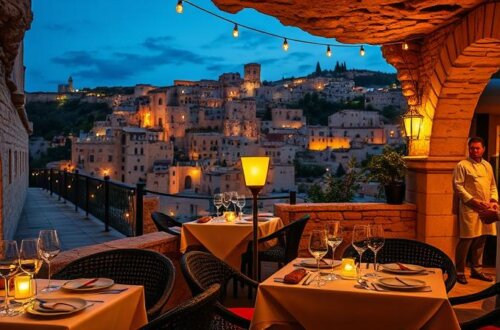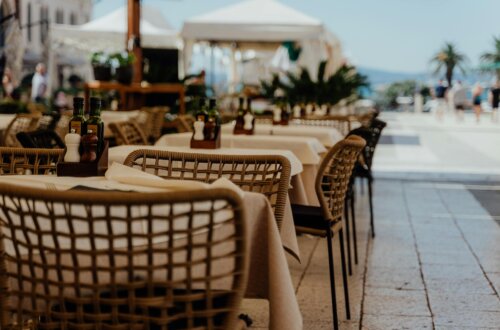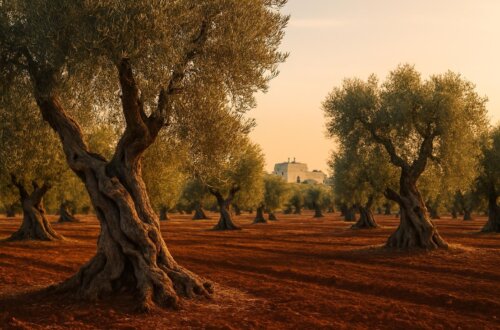
Olive Oil Tasting in Crete: Discover the Island’s Liquid Gold
Olive Oil Tasting in Crete: Discover the Island’s Liquid Gold
Imagine standing in an ancient olive grove on Crete, the Mediterranean sun warming your skin as you swirl golden liquid in a small glass. The aroma hits you first—fresh-cut grass, green tomatoes, a whisper of almond. Then comes the taste: peppery, fruity, with that characteristic throat-catching finish that makes you cough slightly. Congratulations—you’ve just experienced what locals call “liquid gold,” and you’re about to understand why Cretan olive oil is considered among the finest in the world.
Crete isn’t just another Mediterranean island producing olive oil. This is where olive cultivation began over 4,000 years ago, where the Minoans first pressed olives into the golden elixir that would become central to Mediterranean civilization. Today, that ancient tradition continues, but with a modern twist that makes olive oil tasting in Crete an unforgettable experience for travelers seeking authentic cultural connections.
Whether you’re a foodie hunting for the perfect extra virgin olive oil, a curious traveler wanting to understand Cretan culture, or simply someone who loves the idea of sipping wine’s sophisticated cousin in sun-drenched groves, this guide will take you through everything you need to know about olive oil tasting in Crete.

The Legacy of Olive Oil in Crete: A Tradition Rooted in Ancient History
Walk through any archaeological museum in Crete, and you’ll encounter amphorae—those distinctive clay vessels that once carried olive oil across the ancient world. The Minoans weren’t just producing olive oil for their own use; they were exporting it throughout the Mediterranean as early as 2500 BCE, making olive oil one of history’s first international commodities.
This isn’t just ancient history gathering dust in museums. The same groves that fed Minoan civilization are still producing today, some with olive trees that have been bearing fruit for over 2,000 years. That’s not an exaggeration—Crete is home to some of the world’s oldest living olive trees, gnarled and twisted witnesses to millennia of human civilization.
Today, Crete produces approximately 100,000 tons of olive oil annually, accounting for roughly one-third of Greece’s total production. Even more impressive? About 70% of Cretan olive oil qualifies as extra virgin—the highest quality classification—compared to a global average of around 10%. These numbers tell a story of dedication, ideal growing conditions, and expertise passed down through countless generations.
The UNESCO-recognized Mediterranean diet, now celebrated worldwide for its health benefits, places olive oil at its very heart. And Crete? It’s been the living laboratory for this diet for thousands of years, with locals consuming some of the highest quantities of olive oil per capita in the world—and enjoying remarkable longevity because of it.

What Makes Cretan Olive Oil Unique: The Secrets Behind the Superior Taste
Not all olive oil is created equal, and Cretan olive oil stands in a category of its own. But what creates this distinctive quality that has connoisseurs around the world specifically seeking out Cretan labels?
The Koroneiki Advantage
The star of the show is the Koroneiki olive—a small, unassuming fruit that produces oil with remarkably low acidity and intense flavor. While you’ll find Koroneiki olives throughout Greece, the Cretan expression of this variety is particularly prized. Other local varieties like Tsounati add their own character to regional blends, creating a diverse tapestry of flavors across the island.
Terroir: Where Earth Meets Sea
Wine enthusiasts talk endlessly about terroir, but olive oil has it too. Crete’s unique position in the Mediterranean creates a microclimate that’s pure olive-growing magic:
- Intense sunshine that develops complex flavor compounds
- Volcanic soil rich in minerals that the trees absorb
- Sea breezes that moderate temperature extremes
- Low rainfall that stresses trees just enough to concentrate flavors
This combination is nearly impossible to replicate, which is why Cretan olive oil has such a distinctive profile compared to Italian, Spanish, or even mainland Greek oils.
Cold-Pressed Perfection
Traditional stone mills still operate across Crete, pressing olives the way it’s been done for centuries. But modern Cretan producers have also embraced temperature-controlled extraction technology that maintains the “cold-pressed” standard (below 27°C/80°F) while maximizing yield and quality.
The result? Olive oil with acidity levels often below 0.3%—well under the 0.8% maximum for extra virgin classification. Lower acidity means smoother taste, better preservation, and higher polyphenol content (those beneficial compounds that make olive oil a superfood).
Olive Oil Tasting: What to Expect (How to Taste Olive Oil Like an Expert)
Forget everything you know about casually drizzling olive oil on bread. Professional olive oil tasting is a sensory experience that follows specific protocols, and once you learn them, you’ll never taste olive oil the same way again.
The Five-Step Tasting Method
1. The Setup Professional tasters use small, dark-blue or brown glasses that hide the oil’s color (which can bias perception). The glass is often warmed slightly in your hands to release aromatic compounds. If you’re at a tasting in Crete, you’ll typically receive several samples to compare.
2. The Visual (If Visible) Good olive oil should look vibrant—ranging from golden yellow to deep green depending on harvest time and olive variety. Cloudiness isn’t necessarily bad; in fact, unfiltered oil often contains more beneficial compounds.
3. The Swirl and Smell Cup the glass in your hand, swirl gently, and cover it briefly to trap aromas. Then inhale deeply. You’re looking for:
- Fresh, green aromas: Cut grass, green tomato, artichoke, herbs
- Fruity notes: Apple, banana, green almond
- Absence of defects: Musty, rancid, or metallic smells indicate problems
4. The Slurp Take a small sip—about a teaspoon—and here’s where it gets unusual: slurp air through the oil while it’s in your mouth. Yes, it makes a noise. Yes, everyone does it. This aerates the oil and spreads it across your palate, releasing flavors.
5. The Finish Swallow and pay attention to the peppery catch in your throat. That slight cough or tickle? That’s actually a good sign—it indicates fresh oil high in polyphenols, particularly oleocanthal, which has anti-inflammatory properties similar to ibuprofen.
Flavor Profiles to Recognize
Quality extra virgin olive oil should display three key positive attributes:
- Fruitiness: Taste of fresh olives, whether ripe or green
- Bitterness: A pleasant bitterness, not harsh, from olive polyphenols
- Pungency: The peppery sensation in the throat
The balance of these three attributes creates the oil’s personality. Early harvest oils (from green olives) tend to be more robust, bitter, and peppery. Late harvest oils (from riper olives) are milder, sweeter, and more buttery.

Best Olive Oil Tasting Tours in Crete: Top Spots to Savor the Island’s Finest Oils
Ready to experience this for yourself? Crete offers olive oil experiences ranging from industrial-scale modern facilities to intimate family farms where the owner’s grandfather still helps with the harvest.
Premier Olive Oil Destinations
Biolea (Kolymvari, Near Chania) If you want to see how traditional meets cutting-edge sustainable, Biolea is your destination. This organic producer uses stone mills to press olives, then stores oil in temperature-controlled stainless steel tanks. Their tasting room overlooks the groves, and guides explain everything from cultivation to bottling.
What makes it special: Biolea’s commitment to zero waste and carbon neutrality sets a new standard. They even use olive pits as biofuel.
Best for: Eco-conscious travelers and those wanting to understand sustainable olive oil production.
Terra Creta (Kolymvari) One of Crete’s largest producers, Terra Creta offers an impressive visitor experience with a modern museum, production facility tours, and comprehensive tastings. You’ll taste multiple varieties and learn to distinguish between early and late harvest oils.
What makes it special: The scale of operation—you’ll see how quality can be maintained even in large-scale production.
Best for: First-time visitors wanting a polished, informative introduction to Cretan olive oil.
Cretan Olive Oil Farm (Near Agios Nikolaos) This hands-on experience lets you get involved in the process. Depending on season, you might help with harvesting, pressing, or bottling. The family-run operation feels authentic and intimate.
What makes it special: Interactive workshops where you create your own olive oil blend to take home.
Best for: Families and travelers who learn best by doing.
Melissakis Olive Mill (Chania Region) A boutique producer focusing on small-batch, single-estate oils. The Melissakis family has been producing olive oil for generations, and their passion is infectious. Tastings often turn into lengthy conversations about olive oil philosophy over glasses of local wine.
What makes it special: Intimate, personalized experiences with the producers themselves.
Best for: Serious food enthusiasts and those seeking authentic local connections.
Hidden Gems: Family Farms
Beyond the established tour destinations, many small family farms welcome visitors by appointment. Ask your hotel or search for “agrotourism Crete olive oil” to discover these gems. You might find yourself in someone’s courtyard, tasting oil pressed just days before, learning family secrets passed down through generations.
Practical Tasting Tips
- Book ahead: Popular mills fill up, especially during harvest season (October-December)
- Go in the morning: Your palate is freshest, and summer heat won’t overwhelm the experience
- Don’t wear perfume: It interferes with olive oil aromas
- Bring euros: Smaller farms may not accept cards
- Plan to buy: You’ll want to take bottles home—guaranteed
Pairing Olive Oil with Cretan Cuisine: Taste the Island Through Its Dishes
Cretan cuisine doesn’t just use olive oil—it celebrates it. Understanding how locals use their liquid gold elevates your entire culinary experience on the island.
Classic Cretan Dishes Where Olive Oil Shines
Dakos (Cretan Bruschetta) Dried barley rusk softened with water and tomato, topped with mizithra cheese, then drenched—not drizzled, drenched—in olive oil. This simple dish showcases how quality olive oil can be the star ingredient. The peppery finish of the oil balances the sweet tomato and creamy cheese perfectly.
Horta (Wild Greens) Boiled wild greens served warm or cold, dressed simply with lemon juice, salt, and generous olive oil. This is how Cretans have been eating for millennia. The right olive oil transforms bitter greens into something crave-worthy.
Paximadi with Tomato Similar to dakos but simpler—just the rusk, fresh tomato, and olive oil. Locals eat this for breakfast, and once you try it with truly fresh, peppery oil, you’ll understand why.
Tasting Menus and Pairings
Many tavernas now offer olive oil tasting flights paired with local dishes. You might taste:
- Delicate late-harvest oil with grilled fish
- Robust early-harvest oil with lamb or beef
- Medium-intensity oil with white beans or chickpea dishes
- Intense, peppery oil drizzled over ice cream (yes, really!)
The olive oil-dessert pairing is a revelation many visitors don’t expect. Premium olive oil over vanilla ice cream or Greek yogurt with honey creates a sophisticated flavor combination that’s become trendy in high-end restaurants worldwide—but Cretans have been doing it for ages.

Bringing the Taste of Crete Home: Where and How to Buy Authentic Cretan Olive Oil
You’ve tasted the magic. Now you want to bring it home. But how do you ensure you’re getting genuine Cretan extra virgin olive oil and not an inferior blend?
Reading the Label Like a Pro
Look for these quality indicators:
PDO (Protected Designation of Origin) This EU certification guarantees the oil comes from specific Cretan regions and meets strict quality standards. Major PDO regions include:
- Viannos Herakliou Crete
- Apokoronas Chania Crete
- Peza Herakliou Crete
- Sitia Lasithiou Crete
PGI (Protected Geographical Indication) A slightly broader certification that still ensures authentic origin and traditional production methods.
Organic Certification Look for the EU organic logo or specific certifier names. Crete has numerous organic olive oil producers whose methods go beyond standard practices.
Harvest Date Always choose the most recent harvest. Unlike wine, olive oil doesn’t improve with age. Look for harvest dates, not just “best by” dates.
Where to Buy
At the Source Buying directly from mills and farms ensures authenticity and often better prices. Most will pack bottles securely for travel.
Airport Shops Crete’s airports have reputable olive oil shops, though prices are higher. It’s convenient for last-minute purchases.
Online Shipping Many Cretan producers ship internationally. While shipping costs can be significant, you’re guaranteed authentic product. Look for producers’ official websites rather than marketplace sellers.
Sustainability Considerations
When possible, choose producers who:
- Use traditional varieties and protect genetic diversity
- Farm organically or biodynamically
- Operate zero-waste facilities
- Support local communities through fair employment
- Invest in agrotourism to diversify rural income
Your purchase becomes a vote for sustainable Mediterranean agriculture and helps maintain Crete’s olive-growing heritage.
Sustainable Olive Oil Production in Crete: Preserving Tradition While Protecting Nature
The future of Cretan olive oil depends on balancing ancient traditions with environmental responsibility. Fortunately, many producers are leading the way in sustainable agriculture.
Eco-Friendly Practices Across the Island
Modern Cretan olive oil production increasingly incorporates:
- Water conservation: Drip irrigation and capturing rainwater
- Waste reduction: Using olive pits for biofuel and pomace for compost
- Biodiversity protection: Maintaining hedgerows and wild areas within groves
- Renewable energy: Solar panels powering pressing facilities
- Traditional spacing: Avoiding intensive planting that degrades soil
Agrotourism’s Role
Olive oil tourism isn’t just about tasting—it’s an economic model that sustains small farms. When you book a tour or workshop, you’re directly supporting families who might otherwise struggle to compete with industrial producers. This economic incentive helps preserve traditional groves and prevents land from being converted to mass tourism development.
Biolea: A Sustainability Case Study
Worth highlighting again for their comprehensive approach, Biolea demonstrates that large-scale production and environmental stewardship aren’t mutually exclusive. Their facility achieves carbon neutrality through renewable energy and careful waste management. They’ve proven that quality, quantity, and sustainability can coexist.

A Journey Worth Savoring: Your Cretan Olive Oil Adventure Awaits
Olive oil tasting in Crete is so much more than a tourist activity—it’s a portal into 4,000 years of Mediterranean culture, a lesson in terroir and craftsmanship, and an opportunity to understand why Cretans have some of the longest, healthiest lives on Earth.
From the moment you step into an ancient olive grove, feeling the gnarled bark of trees that were old when your grandparents were born, to that first peppery taste of fresh-pressed oil that makes you understand why this liquid was called “gold,” the experience creates memories that last far longer than any souvenir.
The beauty of Cretan olive oil culture is its accessibility. Whether you’re exploring state-of-the-art facilities like Terra Creta, getting your hands dirty at family farms near Agios Nikolaos, or sharing stories over tastings at boutique operations like Melissakis, you’ll find genuine warmth and eagerness to share knowledge.
Your Next Steps
Ready to embark on your olive oil journey? Here’s what to do:
- Research and book tours before arriving in Crete, especially if traveling during harvest season
- Plan your route around olive oil destinations—many cluster in the Chania and Heraklion regions
- Allow time for spontaneous discoveries—some of the best experiences come from roadside signs pointing to family farms
- Bring an empty suitcase or prepare for shipping—you’ll want multiple bottles
- Share your experience with others who might discover Crete through your stories
Remember, every bottle of authentic Cretan olive oil you buy supports families who are custodians of an ancient tradition. You’re not just purchasing a cooking ingredient; you’re participating in the preservation of cultural heritage and sustainable agriculture.
So raise your tasting glass, take that sharp, aromatic inhale, let the peppery liquid gold coat your palate, and welcome yourself to one of humanity’s oldest and most delicious traditions. Crete’s olive groves are waiting, and they have stories to tell—stories that taste remarkable.
Stin ygeia sas! (To your health!) as the Cretans say, because with olive oil like this, health and pleasure are delightfully inseparable.
External Links to Reputable Sources:




